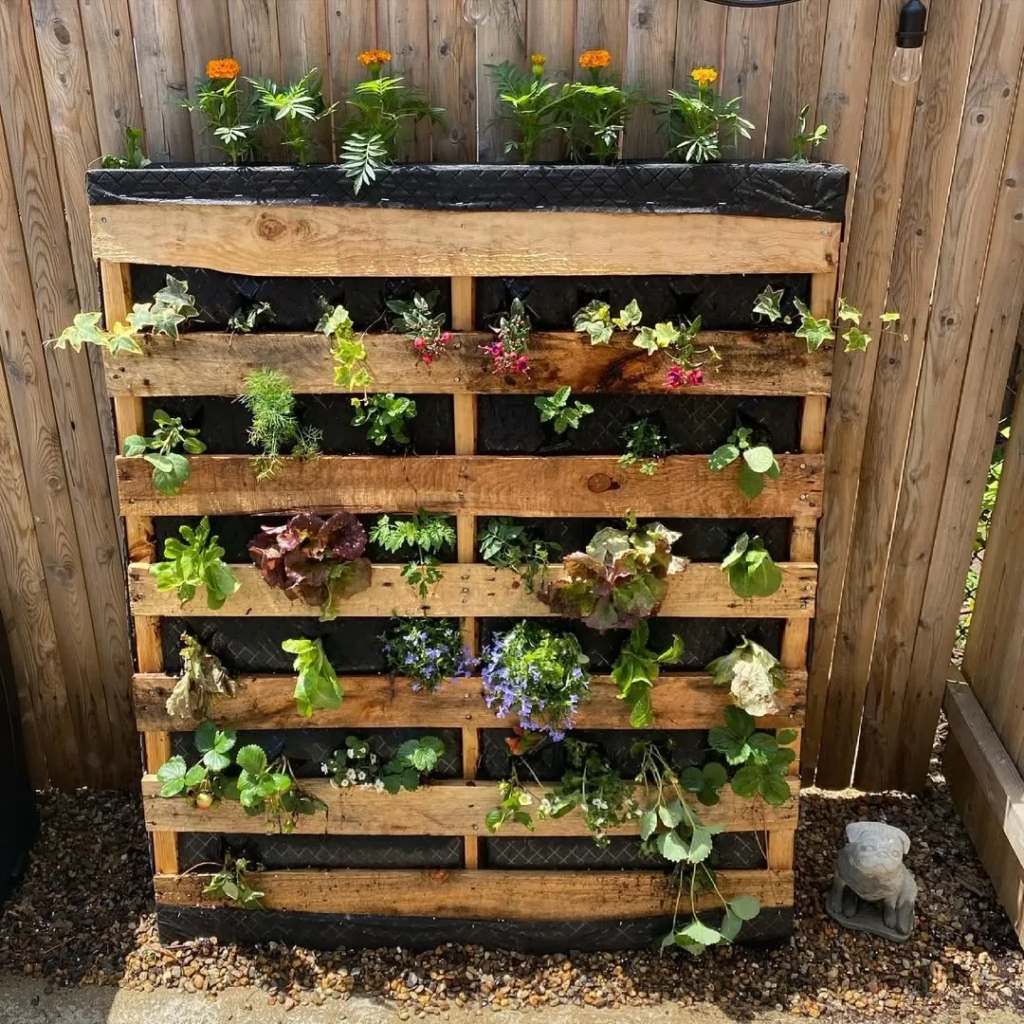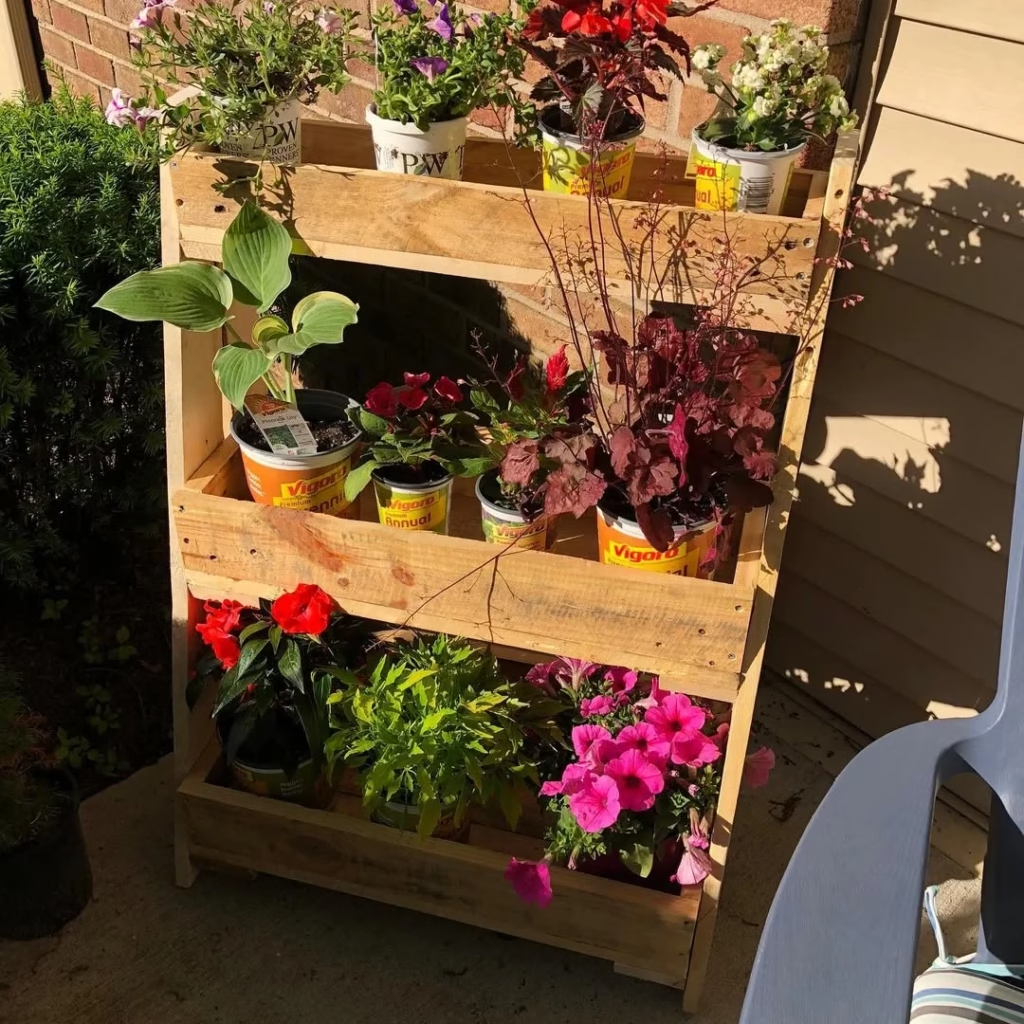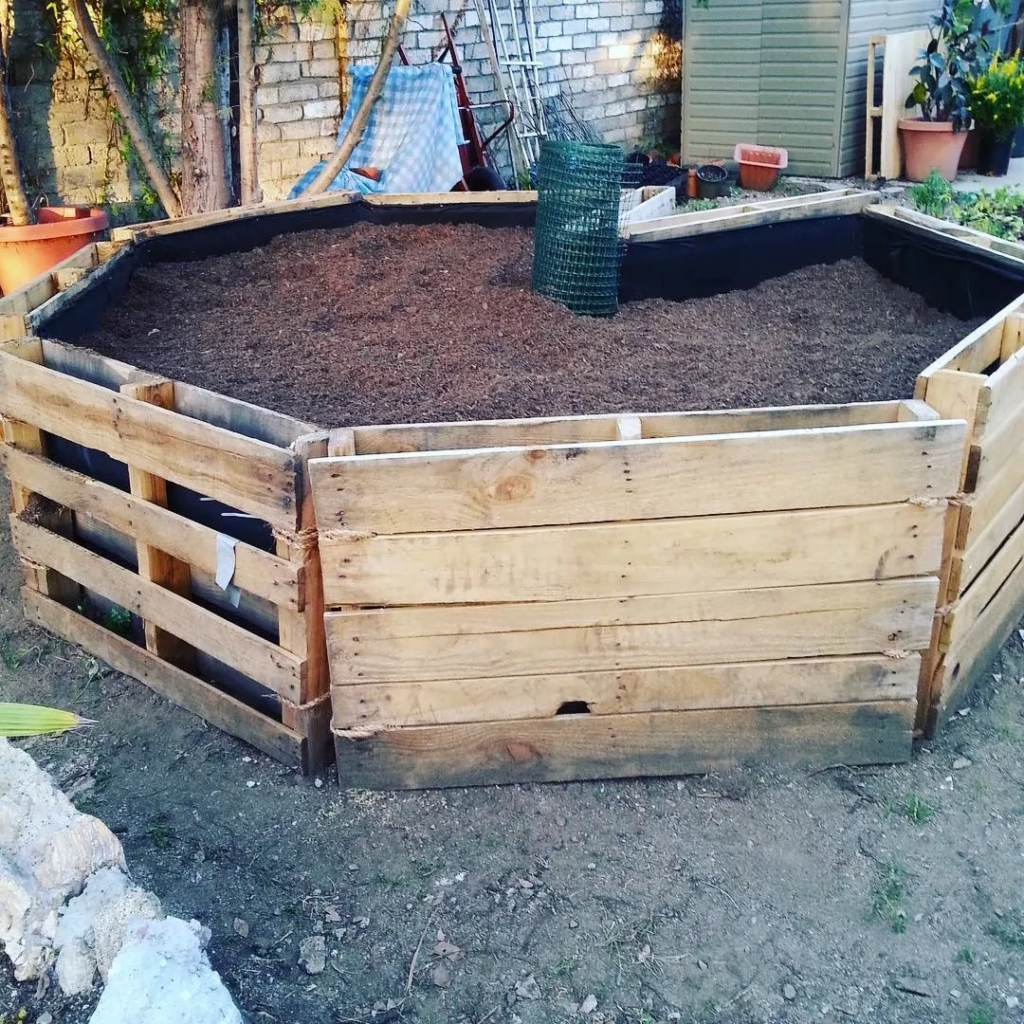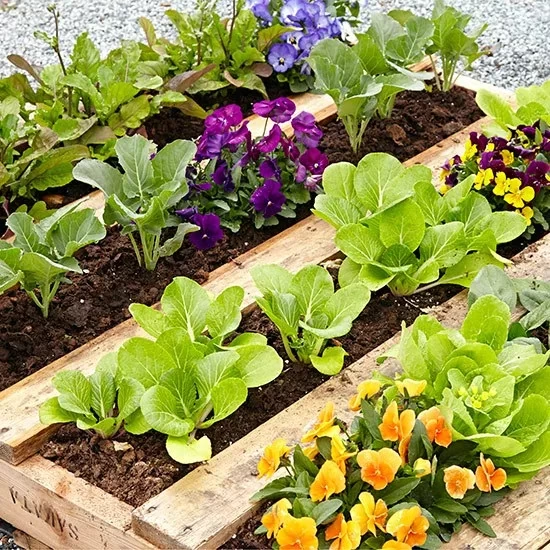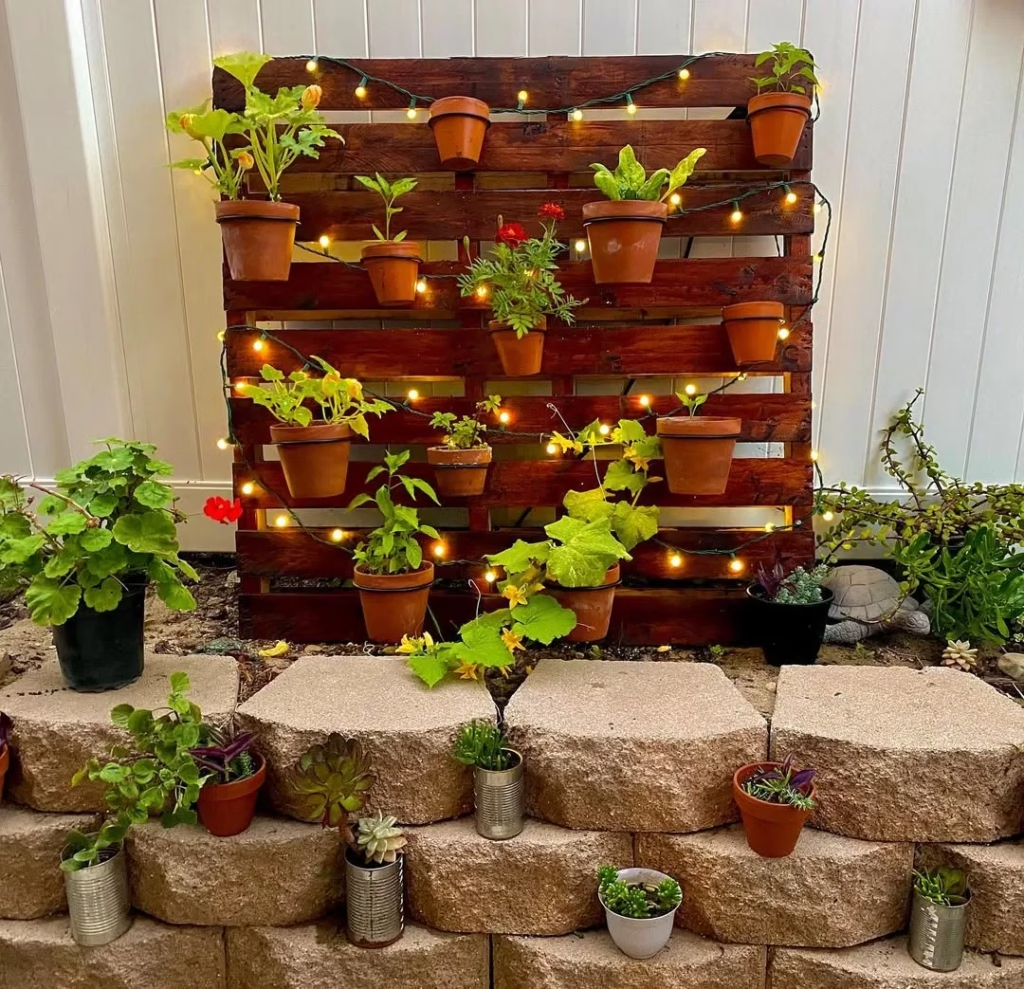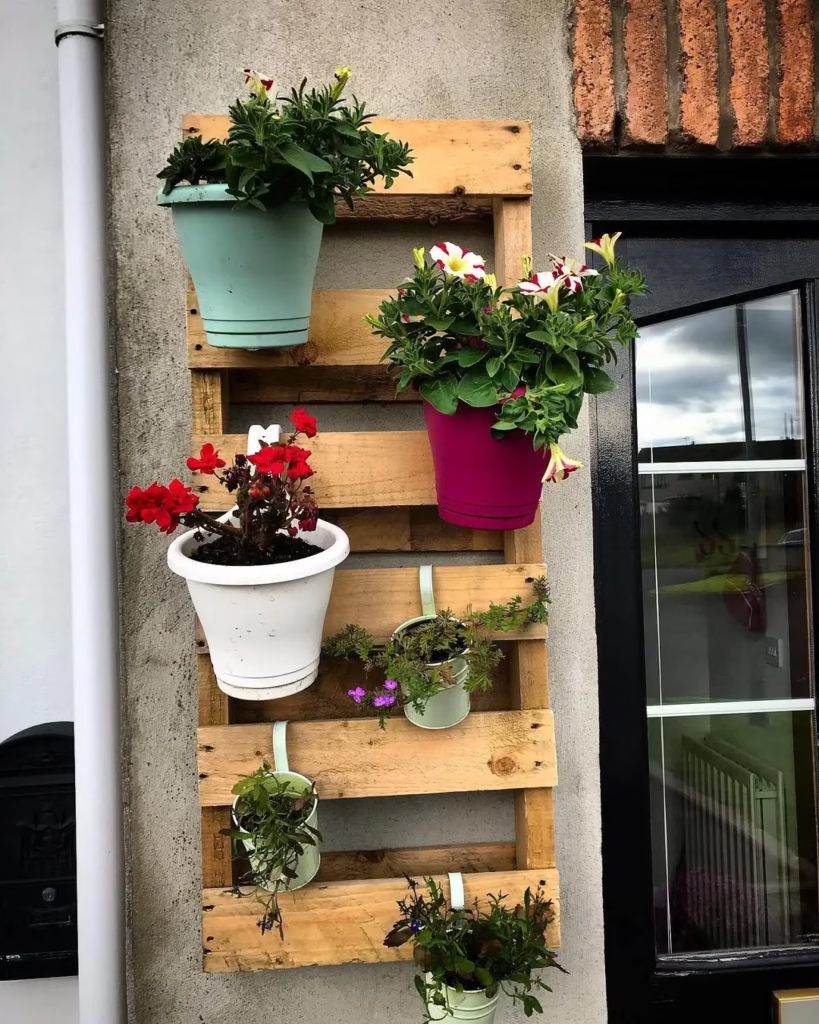Pallet gardens are a brilliant, eco-friendly solution for cultivating herbs, flowers, vegetables, or succulents, especially in small spaces like balconies, patios, or urban backyards. Their vertical or horizontal designs maximize limited areas, transforming reclaimed wood into functional, visually appealing gardens. However, without thoughtful planning, pallet gardens can demand significant upkeep, including frequent watering, weeding, soil replacement, and plant care. By implementing strategic, low-maintenance techniques, you can create a thriving pallet garden that requires minimal effort while delivering lush greenery or bountiful harvests. Here are five practical ways to achieve this, ensuring your garden remains vibrant with little intervention.
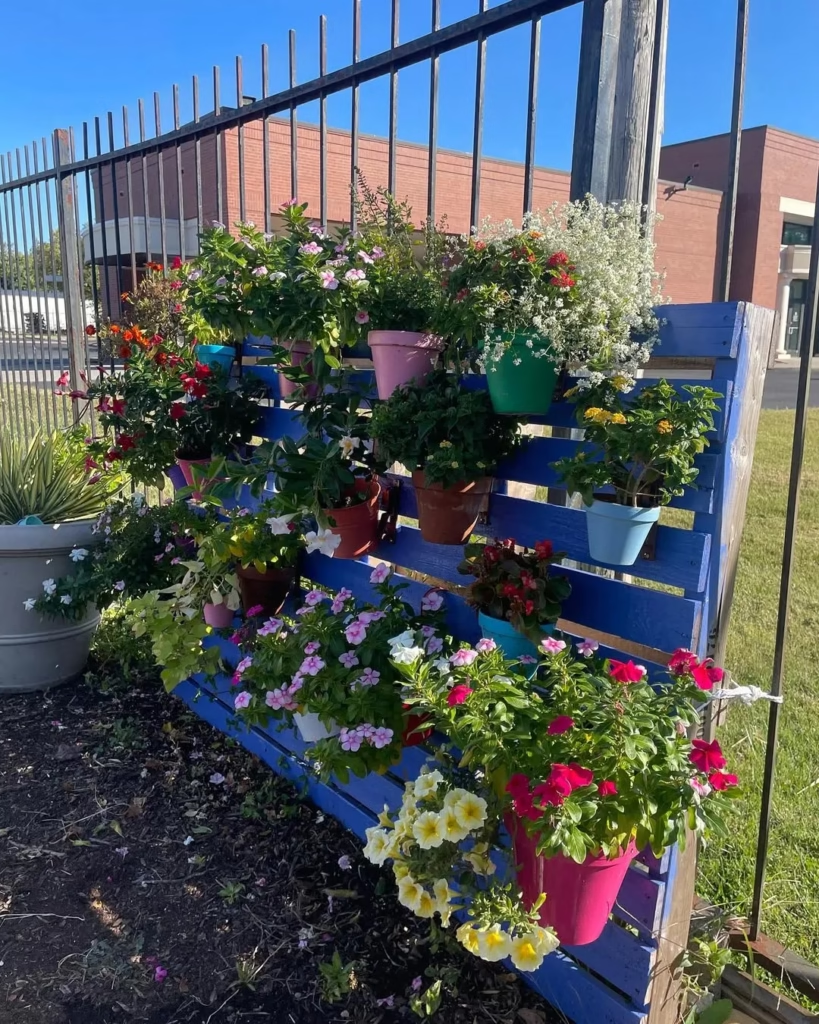
The key to a low-maintenance pallet garden lies in selecting the right plants, materials, and systems from the start. Drought-tolerant and native species reduce watering and care needs, while automated irrigation systems like drip lines save time and conserve water. High-quality soil enriched with compost or slow-release fertilizers minimizes the need for frequent feeding, and mulching further cuts down on weeds and moisture loss. Lining pallets with landscape fabric or coconut coir prevents soil spillage and weed growth, keeping the garden tidy. Finally, choosing perennials over annuals eliminates yearly replanting, allowing your garden to flourish season after season with minimal effort.
1. Choose Drought-Tolerant and Native Plants
One of the most effective ways to reduce maintenance is to select plants that naturally require less care. Drought-tolerant plants like succulents (e.g., sedum, echeveria), lavender, rosemary, thyme, or sage are excellent choices for pallet gardens because they thrive with minimal watering and can withstand periods of neglect. Native plants, which are adapted to your local climate and soil conditions, are even better. They’re accustomed to the rainfall, temperature, and pests in your region, meaning they need less watering, fertilizing, and pest control compared to exotic species.
How to Implement:
- Research your USDA Hardiness Zone (or equivalent for your region) to identify native plants suited to your climate. For example, in arid regions, consider yarrow or black-eyed Susan; in temperate zones, try bee balm or coneflowers.
- Opt for perennials over annuals where possible, as they don’t need replanting each year (more on this in point 5).
- Group plants with similar water and sunlight needs in the same pallet sections to streamline care.
Benefits:
- Reduces watering frequency (some drought-tolerant plants need water only once every 1–2 weeks).
- Lowers the need for chemical fertilizers or pesticides, as native plants are naturally resilient.
- Saves time on replanting and replacing plants that don’t survive local conditions.
By choosing plants that are naturally low-maintenance, you set the foundation for a garden that practically takes care of itself.
2. Install a Drip Irrigation System
Watering is one of the most time-consuming tasks in gardening, especially for vertical pallet gardens where soil can dry out quickly. A drip irrigation system or soaker hoses connected to a timer automates this process, delivering water directly to plant roots with minimal waste. This eliminates the need for daily hand-watering and ensures consistent moisture, even if you’re away for a few days.
How to Implement:
- Purchase a basic drip irrigation kit (available for $20–$50 at garden centers or online) that includes tubing, emitters, and a timer. Alternatively, create a DIY system using a plastic bottle with small holes as a slow-drip reservoir.
- Attach the system to a water source, such as a rain barrel or hose, and position emitters at the base of each plant or row in the pallet.
- Set the timer to water early in the morning or late in the evening to reduce evaporation.
- For a budget-friendly, eco-conscious option, use a gravity-fed system with a raised water container to drip water slowly without electricity.
Benefits:
- Saves time by automating watering (set it and forget it!).
- Reduces water usage by up to 50% compared to hand-watering or sprinklers, as drip systems minimize runoff.
- Prevents over- or under-watering, promoting healthier plants with less effort.
With an automated irrigation system, your pallet garden stays hydrated without daily attention, making it ideal for busy gardeners.
3. Use High-Quality, Nutrient-Rich Soil
The foundation of a low-maintenance pallet garden is the soil. High-quality, nutrient-rich soil retains moisture, provides essential nutrients, and supports healthy root systems, reducing the need for frequent fertilizing or soil replacement. Poor soil, on the other hand, can lead to plant stress, pests, and constant upkeep.
How to Implement:
- Choose a well-draining potting mix specifically designed for containers or raised beds, as pallet gardens function similarly. Look for mixes with peat moss, vermiculite, or perlite for aeration and drainage.
- Enrich the soil with organic compost or a slow-release granular fertilizer (e.g., 10-10-10 NPK) at planting time to provide nutrients for 3–6 months.
- Top the soil with a 1–2 inch layer of organic mulch, such as wood chips, straw, or gravel. Mulch retains moisture, regulates soil temperature, and suppresses weeds.
- For vertical pallets, ensure the soil is packed firmly but not compacted to prevent it from spilling out while still allowing roots to breathe.
Benefits:
- Reduces the need for frequent fertilizing, as slow-release nutrients feed plants over time.
- Minimizes watering by retaining moisture longer, especially in hot climates.
- Prevents weed growth, which can otherwise require regular pulling or chemical treatments.
Investing in good soil and mulch upfront saves hours of maintenance down the line, keeping your pallet garden healthy and vibrant.
4. Line with Landscape Fabric or Coconut Coir
Pallet gardens, especially vertical ones, can be prone to soil spillage, weed growth, and mess, which increase maintenance. Lining the pallet with breathable, durable materials like landscape fabric or coconut coir solves these issues by keeping soil in place, allowing water to drain, and blocking weeds.
How to Implement:
- Before filling the pallet with soil, staple or secure heavy-duty landscape fabric (available at hardware stores) to the back and sides of the pallet. Cut holes where plants will grow to ensure proper drainage.
- Alternatively, use coconut coir (a sustainable, biodegradable option made from coconut husks) for a natural look and feel. Coir is available in mats or loose form and can be layered inside the pallet.
- For horizontal pallets, place fabric or coir at the base to prevent soil from falling through slats while allowing excess water to escape.
- Check the lining annually for wear and replace if needed to maintain its effectiveness.
Benefits:
- Prevents soil loss, reducing the need to refill or clean up around the garden.
- Blocks weeds, which can otherwise compete with your plants for nutrients and require regular removal.
- Simplifies cleaning, as less soil escapes during watering or rain.
This simple step keeps your pallet garden tidy and reduces the time spent on weeding and soil management.
5. Opt for Perennials Over Annuals
Annual plants, which complete their life cycle in one growing season, require replanting every year, adding to maintenance. Perennials, which return year after year, are a smarter choice for a low-maintenance pallet garden. Additionally, incorporating self-seeding plants can help fill gaps naturally without extra effort.
How to Implement:
- Choose perennials suited to your climate and pallet garden’s conditions (e.g., sun or shade). Examples include chives, oregano, mint, strawberries, or daylilies for edible or ornamental gardens.
- Mix in self-seeding annuals like marigolds, cosmos, or nasturtiums, which drop seeds that regrow the following season, reducing replanting needs.
- Space plants appropriately to account for their mature size, preventing overcrowding that could require pruning or thinning later.
- In colder climates, select hardy perennials that can survive winter without needing to be dug up or protected.
Benefits:
- Eliminates the need for yearly replanting, saving time and money.
- Self-seeding plants create a self-sustaining garden that fills in gaps naturally.
- Perennials often develop deeper root systems, making them more drought-resistant and resilient.
By prioritizing perennials and self-seeding plants, your pallet garden will require less replanting and naturally maintain its structure over time.
Final Thoughts
Creating a low-maintenance pallet garden is all about smart planning and leveraging systems that work for you. By choosing drought-tolerant and native plants, installing a drip irrigation system, using nutrient-rich soil with mulch, lining the pallet with fabric or coir, and opting for perennials, you can significantly reduce the time and effort needed to keep your garden thriving. These strategies not only save resources but also make gardening more enjoyable, allowing you to focus on the beauty and bounty of your pallet garden rather than constant upkeep.
